Gunner’s Mate Third Class Ivan LeRoy Bills
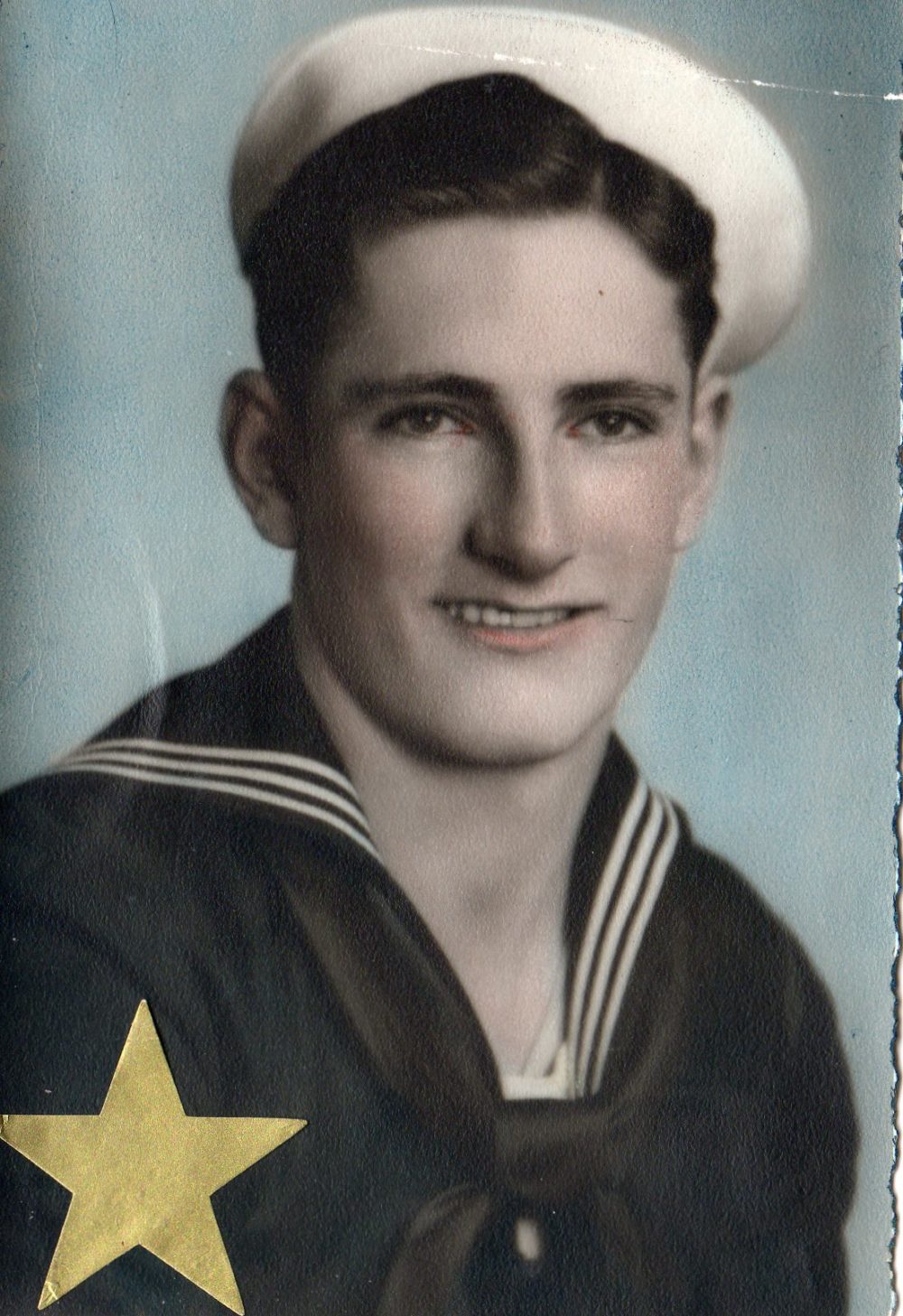
- Unit: USS Hugh W. Hadley
- Service Number: 6606123
- Date of Birth: November 24, 1923
- Entered the Military: November 17, 1942
- Date of Death: May 11, 1945
- Hometown: Riverton, Utah
- Place of Death: Okinawa, Japan
- Award(s): Silver Star, Purple Heart, Asiatic-Pacific Campaign Medal, Navy Expeditionary Medal
- Cemetery: Courts of the Missing. National Memorial Cemetery of the Pacific, Honolulu, Hawai'i
Mentored by Mrs. Melinda Reay
Skyline High School
2021–2022
Early Life
Gunner’s Mate Third Class Ivan LeRoy Bills was born on November 24, 1923, in the small town of Riverton, Utah, to Raymond and Della Bills. He and his seven siblings, Bertha Harrison, Zelda Lloyd, Raymond Bills, Orpha Eastman, Gladys Festermarker, Gordon Bills, and Ray Bills, were raised by their mother, as his father died in a farming accident when several horses spooked, dragging Ray behind them when Ivan was extremely young.
Bills often watched over not only his younger siblings but his eight cousins as well, and he was known for being incredibly responsible and caring. He worked with his mother and aunt in his early life on their family farm, helping to provide for his combined family, and attended Jordan High School in Sandy, where he was known for being a hard worker. Mr. Edgar Aylett later recalled, “Ivan helped me with the work here at school [Riverton School] for two years and I know he was the dependable type. No job was too hard or dirty which we sometimes had here.” He graduated in June 1942 and took a job with the Kennecott Copper Company and worked with them for only a few months before he entered the war.
Bills did not own a bike or a car but instead rode a horse everywhere he went. His attention to detail, patience, and dedication was demonstrated in the time he took to maintain and care for his companion. Colleen Shell, Ivan’s niece, remarked in a recent interview that “one time when shoeing the horse he got kicked in the hip but it didn’t stop him taking care whenever he need to be shod.” Bills never married or had children. He never had the time to attend college before his enlistment.
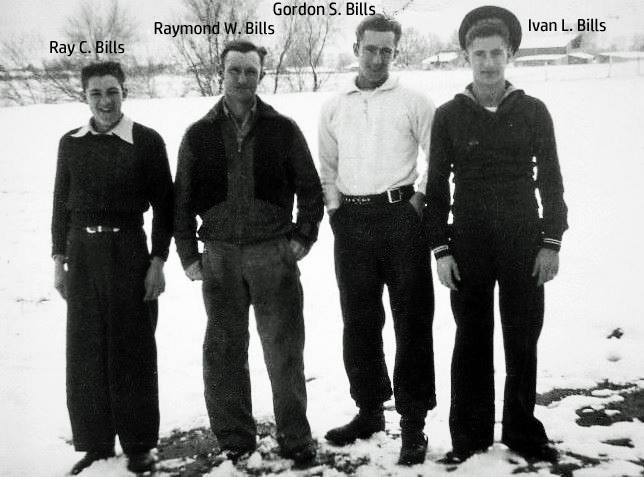
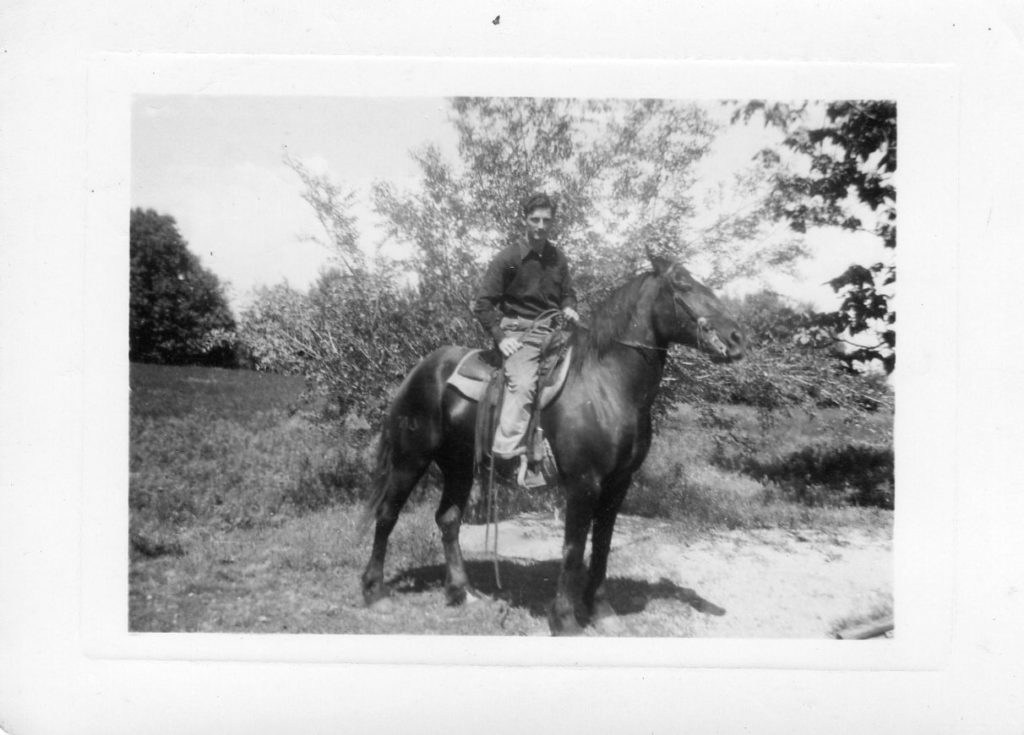

Homefront
Riverton, Utah, was a small town, founded in the late 1800s, at the southern end of the Salt Lake Valley. It was slow to develop, but by the time Bills was born, Riverton was known as a prosperous agricultural community.
Many citizens from Salt Lake and Riverton became involved in the efforts at Ogden Air Depot (later renamed Hill Field in 1944, and known today as Hill Air Force Base) to repair and manufacture planes for the war effort. Utah was especially important due to its geographic advantages. Initially, Hill employed around 6,000 military personnel and 15,000 civilians. In total, around 22,000 civilians, military personnel, and prisoners of war dedicated their time to assisting the base. Many arms manufacturers and ammunition companies, such as Browning and Remmington, also began to set up shop in the Salt Lake Valley, creating even more job opportunities while assisting in the war effort.
Many Rivertons carpooled to work due to the constrictions and limiting of gas and cars. Riverton in particular produced many foodstuffs for the military and worked off of the victory garden movement.
Much of this additional work was desperately needed due to the 36% unemployment rate in Utah following the Great Depression. Applications for financial relief programs were 30%–60% higher in Utah compared to the national average. Due to increased military spending in the state, unemployment and debt decreased considerably.
Not only was the airbase important, but due to the lack of wind, rain, or snow in areas like Wendover, Utah, also became the perfect area for flight and anti-air training. It was also a perfect depot, as railroads running through the state connected the east and west coast as well as being equidistant from the three major naval bases to the west.
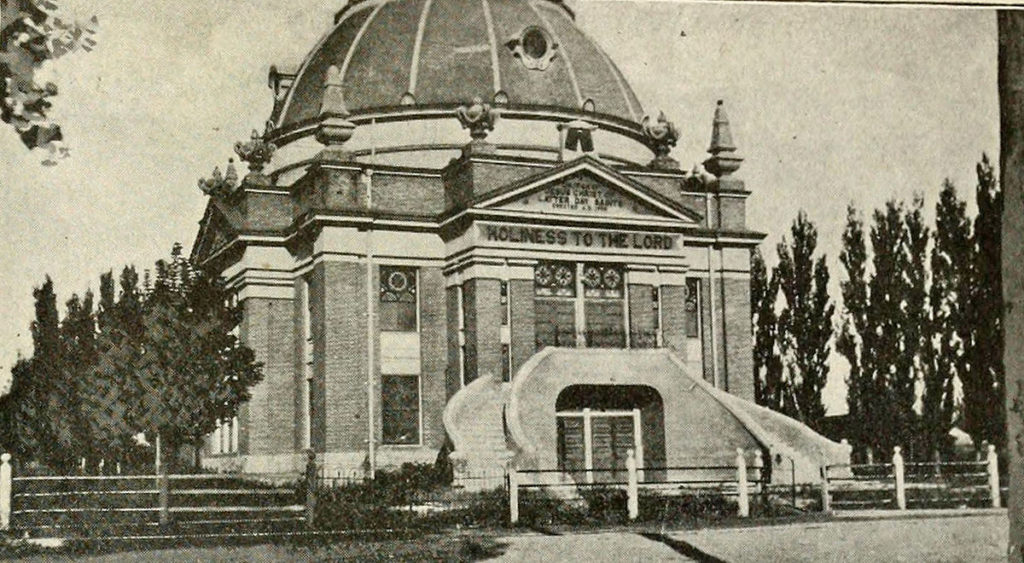
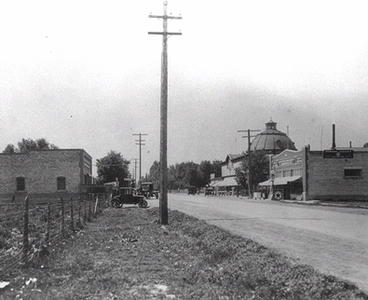
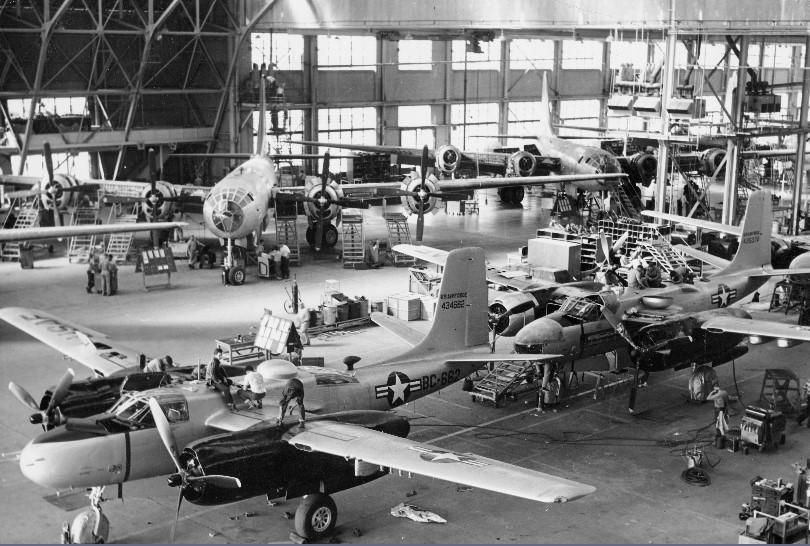
Military Experience
Ivan Bills joined the military, along with his older brother, Raymond, in November 1942, enlisting with the U.S. Navy. His basic training took place in fall of 1942 in Farragut, Idaho, at the Farragut Naval Training Station before a ten-month deployment on the destroyer USS Doherty.
Bills saw action in 1943 at Kiska in the battle for the Aleutian Islands, located just off the coast of Alaska. This would be one of the only times Imperial Japan claimed American territory. Because of the proximity to the mainland, this campaign was instrumental in boosting the morale of the American people. It also proved useful in developing successful tactics to advance in the Pacific. After the success, he returned to the mainland in 1944 and began his specialty gunnery training in San Diego, California.
Bills made many friends during his deployments, his best being William Bruan. Braun remembered Bills to be careful, and precise with his work, stating, “Ike was by far the best-liked person in the gunnery gang. His work was always efficient and he never once left a job undone.”
Between his deployments, he returned to Utah and visited with his family. His niece, Colleen Shell, stated, “one day me and my grandmother were driving down State Street in the Sandy/Crescent area (probably in the area of the South Town Mall). After visiting my aunts and they saw a sailor thumbing. Grandma said to Colleen should we stop and give him a ride and Colleen said yes I think we should. Low and behold it was Uncle Ike. Colleen said you cannot imagine how excited they all were!” She goes on to mention that he viewed Colleen as a little sister, and in every letter Bills wrote to his mother, he always remembered to sign, “Tell Colleen hello.”
Bills graduated in 1944, fourth of his class, and earned the rank of Gunner’s Mate Third Class. He was assigned to a detachment on the destroyer USS Hugh W. Hadley, which sailed to assist in the Battle of Okinawa.
Okinawa was a significant location to launch an attack on the Japanese mainland. Both sides understood this and gave everything they had to secure the tide-turning victory. It was in this battle that Imperial Japan relied heavily on their specially trained kamikaze pilots and suicide crafts for their defense.
In a battle where kamikaze attacks damaged 30 ships, the Hadley made naval history by engaging in a 95-minute air and sea battle where she shot down 23 planes, setting the record for a single engagement.
During the battle, Gunner’s Mate Bills and his team were blown away from their gunnery mount by an enemy bomb. His citation for bravery stated, “Bills instantly returned to his gun and aided his shipmates in resuming fire, sending up a steady stream of anti-aircraft shells against an enemy plane plunging toward him.” Bills and his team downed the plane, but the wreckage crashed into the mount, mortally wounding Bills and several of his crewmates.
Of the 30 casualties sustained by the Hadley during the battle, Bills would be counted amongst them.
Gunner’s Mate Bills was buried at sea after the battle. Chaplain Edwin Winder, a fellow Utahn of the Salt Lake Valley, recounted his final moments during the service: “I know he could have made no greater sacrifice, he defended his country, he stood by his gun to the last. He and his captain were the last men on that gun. Had it not been for their remarkable work probably the ship would not have been afloat today.”
William Braun wrote, “[The service was] by all means something we shall never forget. He gave his life for his country and his ship, and God knows no man would do more . . . As for myself, I lost my best friend.”
Bills was awarded ten medals over the course of his military career, but most notably the Silver Star, the third-highest military honor as well as the Purple Heart in recognition of his sacrifice.
He is memorialized on the Courts of the Missing, National Memorial Cemetery of the Pacific, Honolulu, Hawai’i, Riverton City Cemetery, Riverton, Utah, and Memory Grove Memorial, Salt Lake City, Utah.
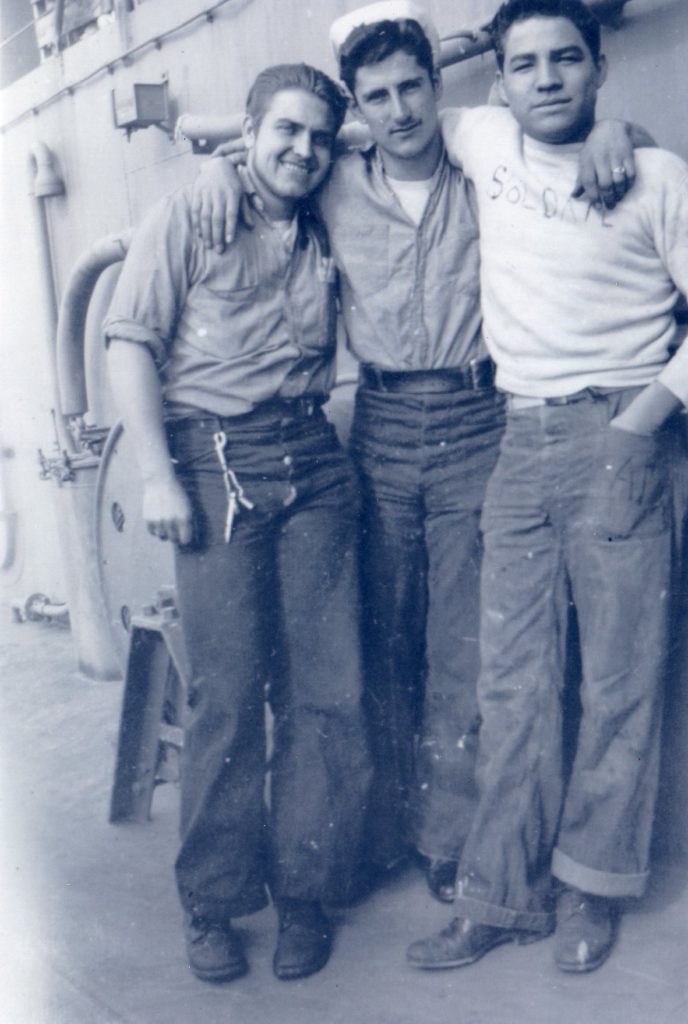

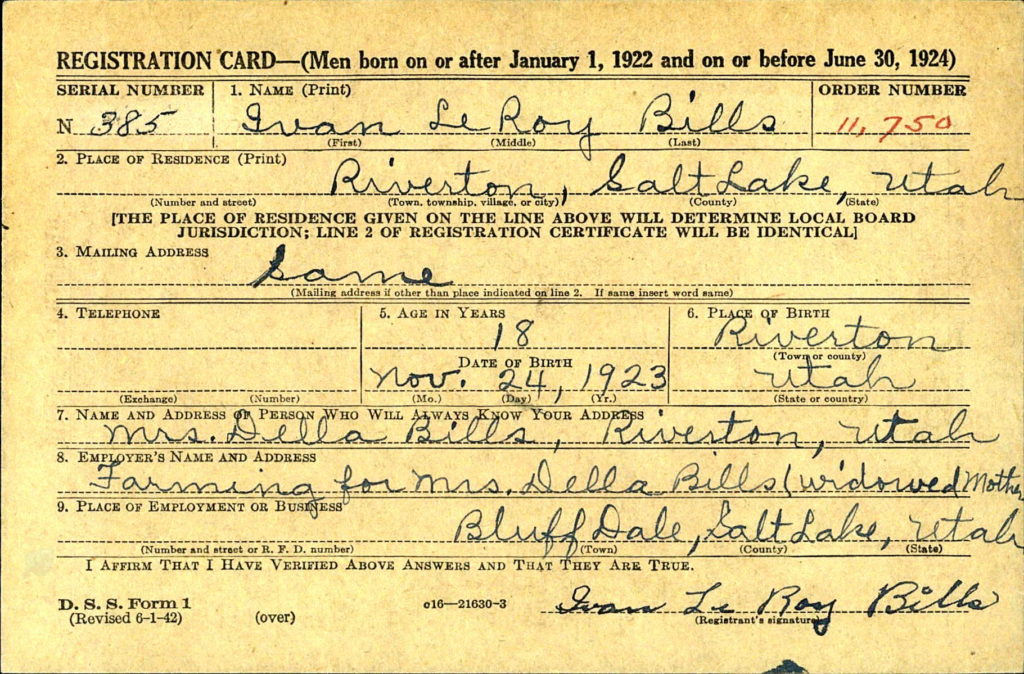
Eulogy
Ivan Bills was remembered by his family for being a caretaker and patient with the drive to complete anything he set his mind to. To his friends, Ivan Bills was a man everyone got along with, he was a hard worker, and earned everyone’s respect. Edwin Winder stated at the service, “because as Bill Brown said in his letter there was no better liked fellow at the gunnery school than Ivan. In fact, I think I could go a little farther and say there was no better liked fellow on the whole ship . . . I don’t believe I have ever felt a greater loss, because I considered him one of my best friends.”
To the rest of Utah and the United States, Ivan Bills was nothing less than a hero. While his body lay to rest off the coast of Okinawa, a memorial service was still held in his honor on October 25, 1946, during a Navy Day ceremony. Bills would be succeeded by no children, so his Silver Star would be bestowed to his mother. At his memorial service, his favorite song, “When My Blue Moon Turns To Gold” by Merle Haggard, was played. A stanza of the song reads “Memories that linger in my heart/ Memories that make my heart grow cold/ But someday they’ll live again/ And my blue moon again will turn to gold.” It is with this that we remember the triumphs, trials, and sacrifices of the life of Gunner’s Mate Third Class Ivan “Ike” LeRoy Bills. He lived a short but impactful life, positively influencing those around him and helping to write history for the better. As it was put at his service, he was born as a boy but died a hero. His blue moon has turned to gold.
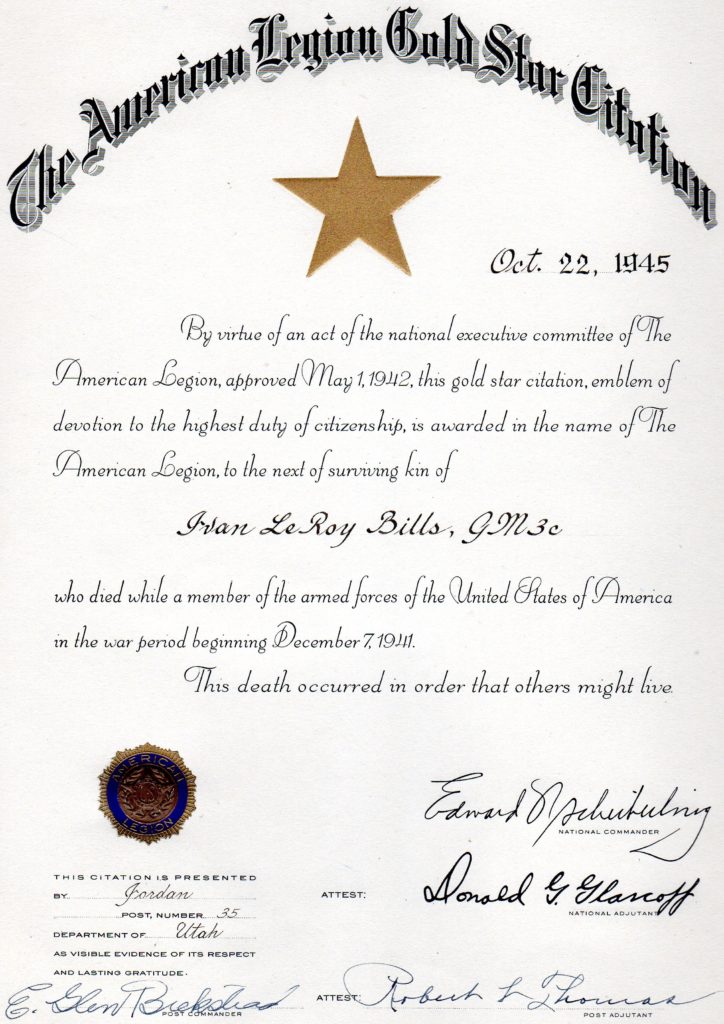
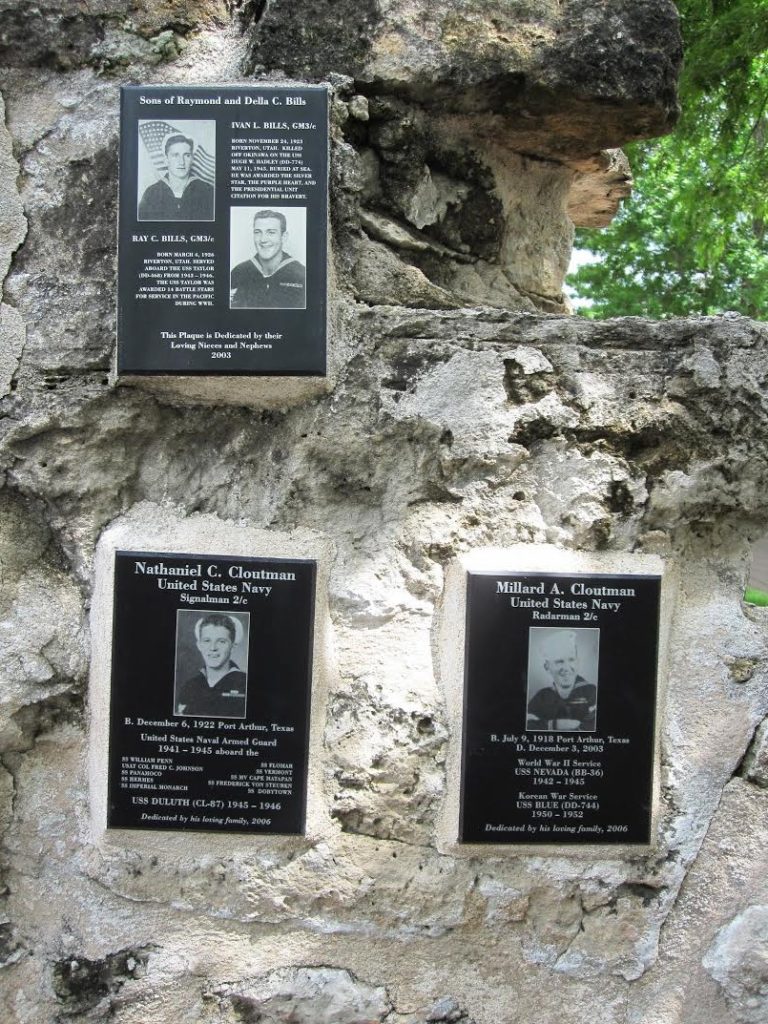
Reflection
At the end of the trip, my teacher, Mrs. Reay, and I discussed what we called lei moments. She learned that people place or give leis to places or people that they respect or that mean a lot to them. That idea really resonated with both of us and so we decided to pick what would be our lei moments for this experience. The USS Arizona memorial, raising the flag on the Missouri, and reaching the top of Diamond Head were all extremely big lei moments to me. There was no bigger one than finally getting to read our eulogies at the Punch Bowl. After spending so much time reading about my hero, his sacrifice, and his life, it felt fulfilling to honor him finally. I only wish I could have said more about his character and who he was as a person. Having family that served, I never really understood the sort of things that they went through. This opened my eyes to what it was really like, to what they had to sacrifice.
It is only in writing this that I realize I have one more lei moment. Going through the modules, talking with everyone, and learning so much about history that I had been missing was almost better than the trip itself. All of the questions and research projects that we had to do were so much fun and so interesting. There was never a time when I was bored or wished that I had no work. There was so much I wanted to take in. This project in its entirety was a life-changing lei moment for me.
I wanted to extend a thank you to all of the organizers and teachers we had on the trip as well. No matter who it was, there was an immeasurable amount of passion for not only their specific area or event but for history as a whole. Never in my life have I met people that I got along with so well and as quickly as the students, teachers, and people I had the pleasure to meet on this trip. My biggest takeaway from this is to keep pushing and go for opportunities if you are passionate about them. There were times when I doubted myself and wanted to give up but thanks to the people that gave me an undying amount of support, I accomplished something I had been dreaming about for nine months.
I am so grateful for this experience, and I wanted to say thank you in complete sincerity to everyone. I know that this experience will stick with me for the rest of my life.
Bibliography
Primary Sources:
“7 Utahns Die, 1 Lost, 3 Wounded in War.” The Salt Lake Tribune [Salt Lake City, Utah], July 11, 1945. Newspapers.com (598892778).
Bills Family Photographs. 1930s-1940s. Courtesy of the Bills Family.
Douglas B-26 Invader. Photograph. Early 1950s. U.S. Air Force (200414-F-F3495-0001). https://www.hill.af.mil/News/Photos/igphoto/2002280794/.
Ivan Bills. 1941 Jordan High School Yearbook. Digital images. https://ancestry.com.
Ivan LeRoy Bills. U.S. Navy Casualty Books, 1776-1941. Digital images. https://ancestry.com.
Ivan LeRoy Bills. Utah, U.S., Veterans with Federal Service Buried in Utah, 1847-1966. Digital images. https://ancestry.com.
Ivan LeRoy Bills. World War II Navy, Marine Corps, and Coast Guard Casualties, 1941-1945. Digital images. https://ancestry.com.
Ivan LeRoy (Ike) Bills. Military Service Cards, c. 1898-1945. Digital images. https://ancestry.com.
Ivan Le Roy Bills. World War II Draft Registration Cards Young Men, 1940-1947. Digital images. https://ancestry.com.
Silver Star Certificate. October 22, 1945. Courtesy of the Bills Family.
“Mother Receives Son’s Silver Star.” Deseret News [Salt Lake City, Utah], October 25, 1946. Newspapers.com (594852028).
“Navy Day Fete TOld Fleet Vital in Peace.” The Salt Lake Tribune [Salt Lake City, Utah], October 26, 1945. Newspapers.com (598892778).
Riverton, c. 1920s. Photograph. 1930s. Utah History Encyclopedia. https://www.uen.org/utah_history_encyclopedia/r/RIVERTON.shtml.
Riverton Ward Meeting House. Photograph. June 1914. Wikimedia Commons. https://en.wikipedia.org/wiki/Riverton_Ward_Meetinghouse#/media/File:Riverton_Ward_Meeting_House.jpg.
“U.S. Tributes Utah Naval Hero Today.” The Salt Lake Tribune [Salt Lake City, Utah], October 25, 1946. Newspapers.com (598892917).
Utah. Salt Lake County. 1930 U.S. Federal Census. Digital images. https://ancestry.com.
Secondary Sources
Bashore, Melvin L. “Riverton.” Utah History Encyclopedia. Accessed October 31, 2022. https://www.uen.org/utah_history_encyclopedia/r/RIVERTON.shtml.
“Battle of the Aleutian Islands.” HISTORY®. Updated June 30, 2020. Accessed October 31, 2022. https://www.history.com/topics/world-war-ii/battle-of-the-aleutian-islands.
“Description of Medals.” U.S. Department of Defense. Accessed October 31, 2022. https://valor.defense.gov/Description-of-Awards/.
Embry, Jessie L. “Fighting the Good Fight: The Utah Home Front During World War II.” Utah Historical Quarterly 63, no. 3, (1995). https://issuu.com/utah10/docs/uhq_volume63_1995_number3/s/161827.
“Farragut State Park.” Idaho Department of Parks and Recreation. Accessed October 31, 2022. https://parksandrecreation.idaho.gov/parks/farragut/.
“GM3 Ivan LeRoy Bills.” Find a Grave. Updated August 6, 2010. Accessed October 31, 2022. https://www.findagrave.com/memorial/56115459/ivan-leroy-bills.
“History of Riverton, Utah.” Riverton Utah. Accessed October 31, 2022. https://www.rivertonutah.gov/about/history/index.php.
“Ivan Le Roy Bills.” Find a Grave. Updated March 21, 2009. Accessed October 31, 2022. https://www.findagrave.com/memorial/35050261/ivan-le_roy-bills.
“Ivan LeRoy Bills,” Honor States. Accessed October 31, 2022. https://www.honorstates.org/index.php?id=117250.
“Kennecott Corporation History.” Funding Universe. Updated 1999. Accessed October 31, 2022. http://www.fundinguniverse.com/company-histories/kennecott-corporation-history/.
Ray, Micheal, et al. “Battle of Okinawa,” Brittanica. Updated November 11, 2020. Accessed October 31, 2022. https://www.britannica.com/topic/Battle-of-Okinawa.
Launius, Roger D. “World War Two in Utah,” History on the Go. Accessed October 31, 2022. https://historytogo.utah.gov/wwii-utah/.
Westwood, Brad. “Twentieth Century Changes to Salt Lake City’s Original West Side” Speak Your Piece Podcast: A Podcast About Utah’s History. Podcast. Utah Department of Cultural and Community Engagement. https://community.utah.gov/twentieth-century-changes-to-salt-lake-citys-original-west-side/.

